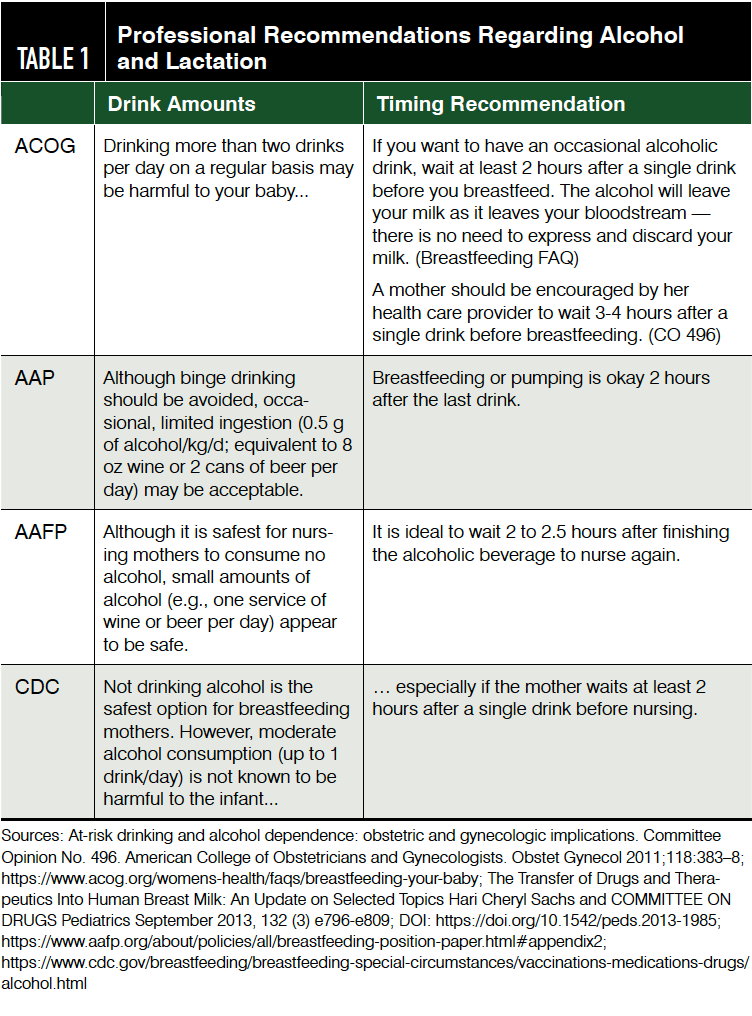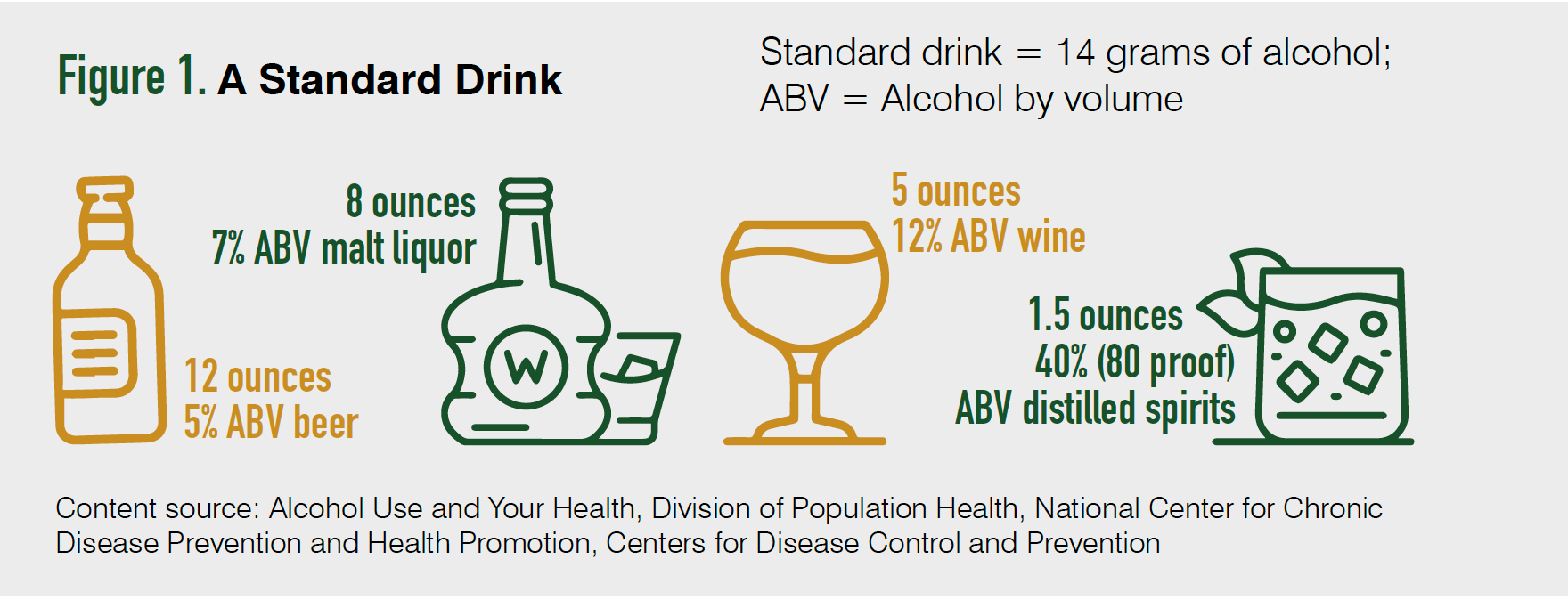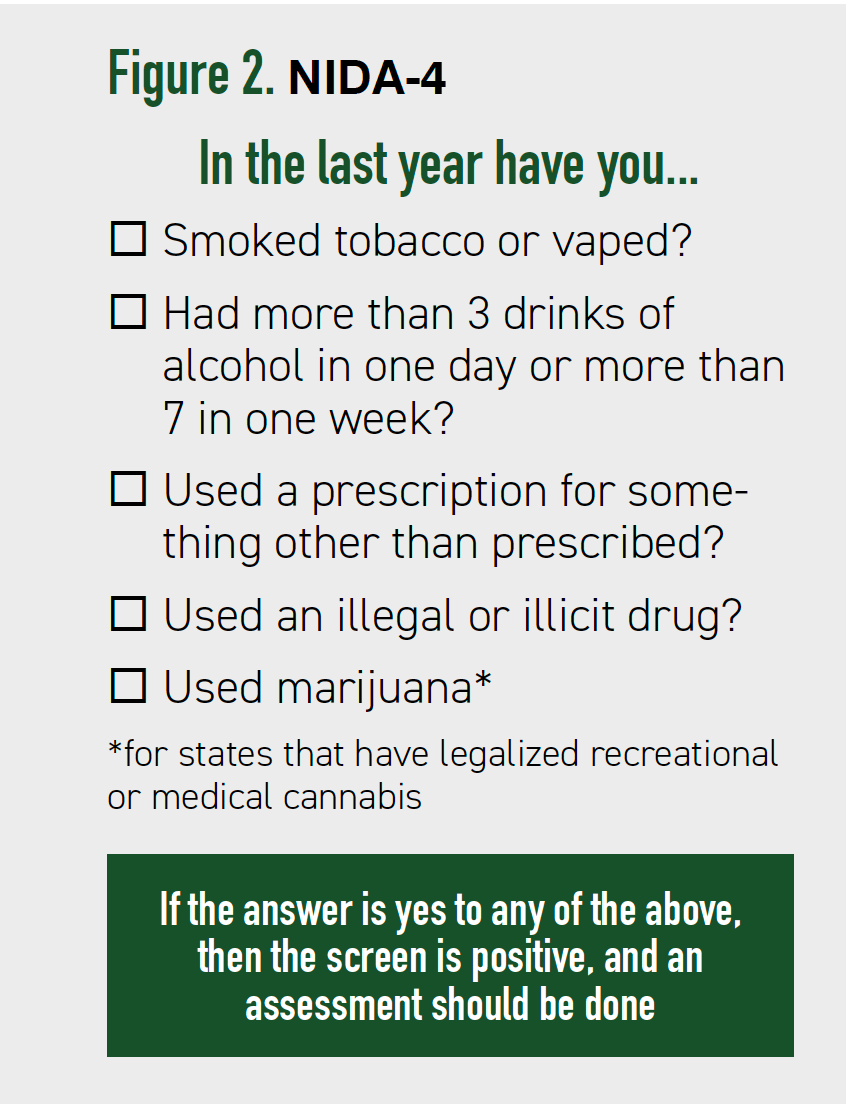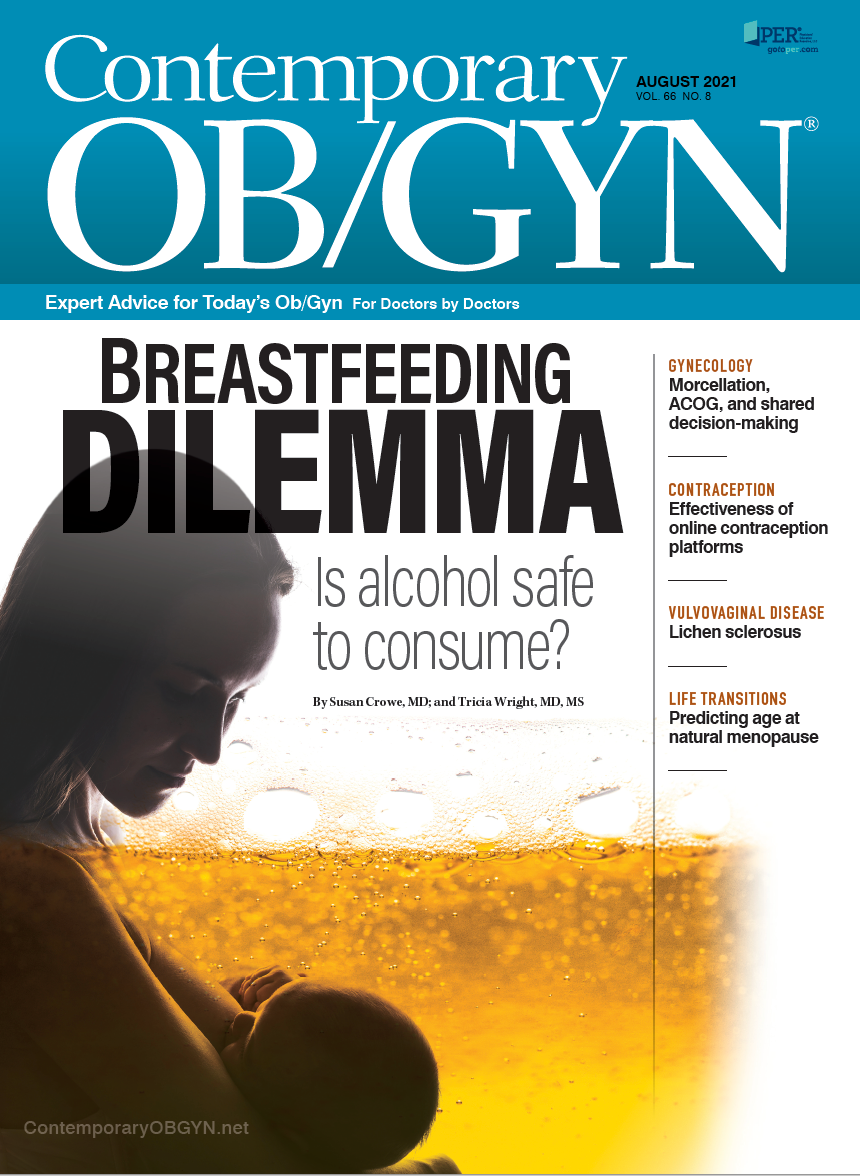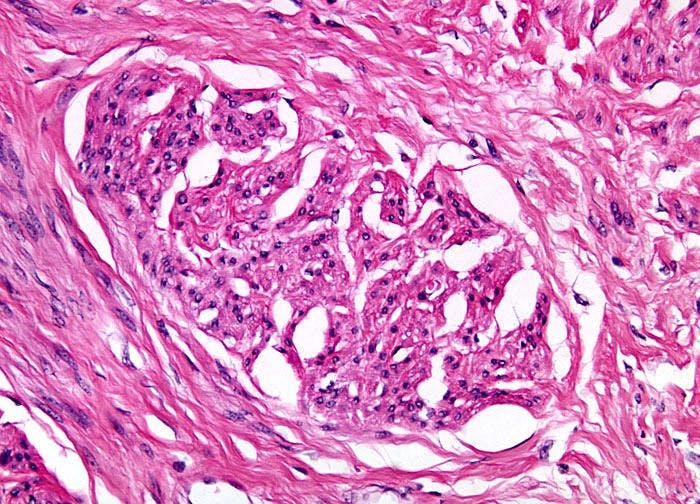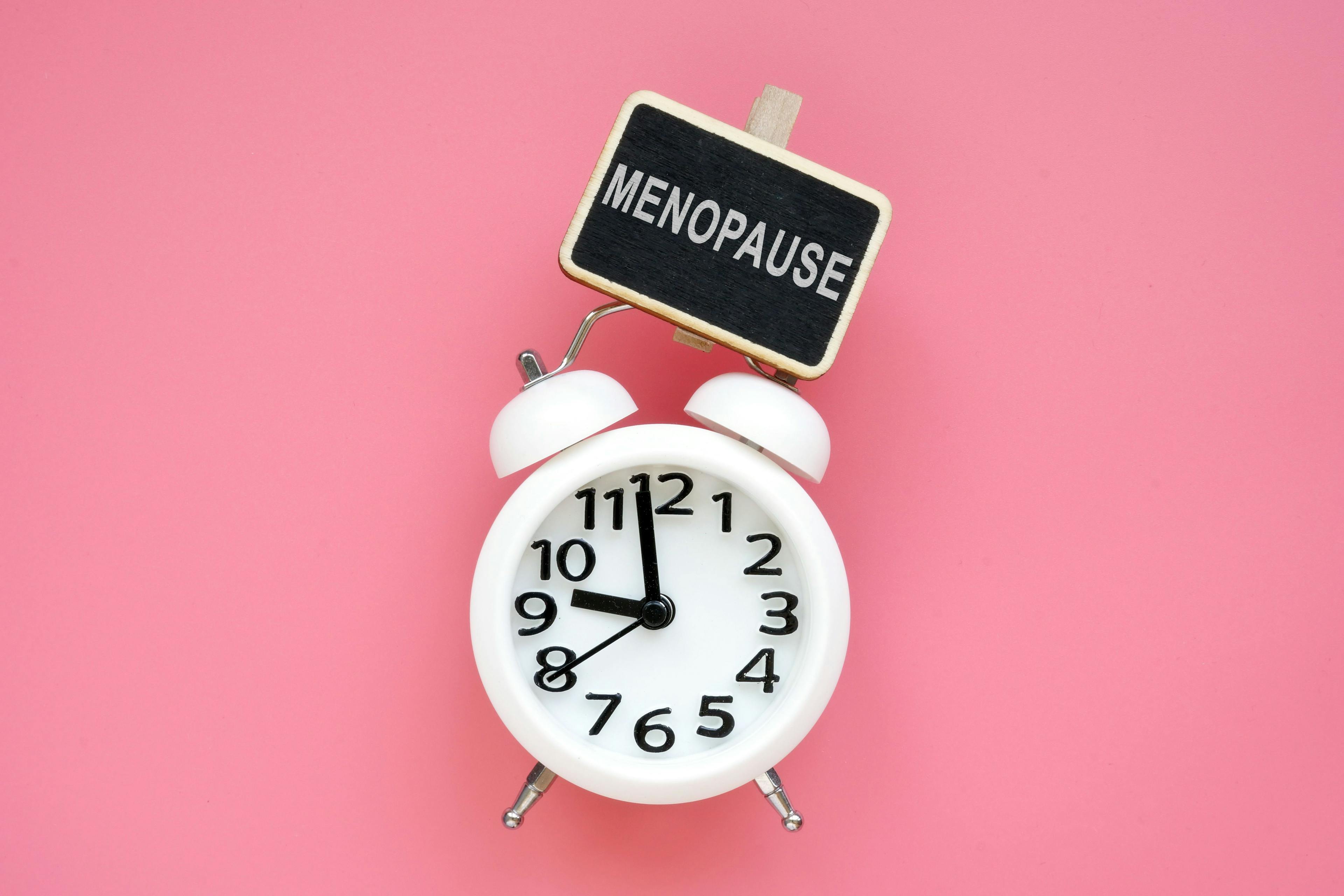View as PDFAlthough the harmful effects of alcohol use during pregnancy are well documented and recommendations to avoid alcohol during pregnancy are clear, the risks of alcohol use during lactation are less understood.
When patients ask medical professionals for guidance about the safety of consuming alcoholic beverages during lactation, they often are met with conflicting advice. Providers and patients are tasked with navigating the limited information available on this very relevant topic.
Because of the lack of definitive data around lactation and alcohol consumption, recommendations from professional organizations vary (Table 1).
Clinical Pearls
- Levels of alcohol in milk closely parallel maternal blood alcohol concentrations.
- It is not necessary to pump and dump milk after consuming alcohol, but expressing milk can maintain supply and avoid complications of engorgement if a feeding is being delayed.
- Alcohol inhibits oxytocin and can diminish milk supply.
- Even small amounts of alcohol in human milk have been shown to disrupt and shorten total duration of infant sleep.
- If a lactating person chooses to consume alcohol, exposure to the infant can be minimized by pumping or feeding just prior to drinking, limiting intake to 1 standard drink, and waiting at least 2 to 3 hours before directly feeding the infant again.
The World Health Organization recommends avoiding alcohol during lactation,1 whereas the American Academy of Pediatrics (AAP) states that occasional alcohol use equivalent to 8 oz of wine or 2 cans of beer per day may be acceptable and that waiting 2 hours after the last drink before breastfeeding is sufficient.2,3 The Academy of Breastfeeding Medicine offers similar advice, also acknowledging that the long-term effects of alcohol in human milk remain unknown.4 The American College of Obstetricians and Gynecologists (ACOG) has guidance directed toward parents in which it recommends waiting at least 2 hours after a single drink before breastfeeding; however, an ACOG Committee Opinion recommends that “a mother should be encouraged by her health care provider to wait 3 to 4 hours after a single drink before breastfeeding her infant.”5,6
Alcohol is ubiquitous in our society, and many females wish to resume alcohol use during lactation after abstaining during pregnancy. In 2019, more than half of the US adult population drank alcohol in the past 30 days. About 26% of the adult population reported binge drinking (for women, 4 or more drinks on 1 occasion) and 6.3% reported heavy drinking (for women, 8 or more drinks per week) in the past month.7
Although about 50% of lactating females reported using alcohol at least occasionally, only 13% reported being counseled by their health care provider about the risks of alcohol use during lactation.8,9
Because of the high prevalence of alcohol consumption and the fact that 58% of infants in the US are breastfeeding for at least 6 months, health care providers will encounter questions from patients about the safety of alcohol use during lactation.10 Any advice to restrict lactation because of maternal alcohol intake must be balanced carefully with the known maternal and infant health benefits of lactation. Although data are limited on this topic, much is known and should be communicated to patients during pregnancy and postpartum care.
Is alcohol present in human milk subsequently absorbed by an infant?
Alcohol is a small (46 Da) and very water-soluble molecule, so it passes freely into human milk.11 Therefore, levels of alcohol in milk closely parallel maternal blood alcohol concentrations. The milk alcohol levels peak about 30 to 60 minutes after consumption of an alcoholic beverage, but the peak can be delayed by an additional hour if alcohol is consumed with food.
The overall bioavailability of alcohol in lactating females is about 25% lower when compared with nonlactating females, resulting in lower peak alcohol blood levels, but the time to the peak blood alcohol levels is the same.11 Feeding or expressing milk prior to alcohol consumption may contribute further to decreased bioavailability.12 If an infant consumes milk during the time of maximum alcohol concentration, the amount of alcohol the infant consumes is estimated to be about 5% to 6% of the weight-adjusted maternal intake.9
Alcohol elimination from breast milk depends largely upon maternal weight and the amount of alcohol consumed. The more alcohol is consumed, the longer it will be present in the milk.
After drinking a standard single drink (Figure 1), alcohol is typically detected in milk for approximately 2.5 hours for a 132.3-lb person (60 kg). If a second beverage is consumed, the time to eliminate alcohol doubles and alcohol will be detectable in milk for closer to 5 hours. If a binge-drinking episode occurs, alcohol may be detected for more than 9 hours.11
Although alcohol test strips have been used to determine the presence of alcohol in milk, it is more reliable to use nomograms to determine when milk is free of alcohol (Table 2).
Once alcohol-containing milk is consumed, it is absorbed by the infant. Calculations estimate that infant blood alcohol levels would reach about 0.005% after consuming human milk following maternal consumption of 4 standard drinks.9 The rate at which an infant can metabolize alcohol is about half that of adults because of immature metabolic pathways that detoxify alcohol.13
Little and colleagues hypothesized that the infant brain may be exquisitely sensitive to alcohol even in these small quantities because of the infant’s rapid brain growth and immature metabolism.14
Is “pump and dump” a way to eliminate alcohol?
It is not necessary to pump and dump milk after consuming alcohol. This will not speed the elimination of alcohol from milk. However, if alcohol use results in delayed or skipped feeding, expressing milk can maintain supply and avoid complications of engorgement.15
Is alcohol a galactagogue?
Contrary to folklore advocating the use of alcohol to stimulate milk production, alcohol has been shown to decrease milk production, at least temporarily.16 It interacts with the neuroendocrine axis, disrupting the hormones that influence lactation. Alcohol inhibits the release of oxytocin, the hormone responsible for the milk ejection reflex.
Alcohol in doses of 0.5 g/kg (which is about 8 oz of wine or 2 beers for a 132.3-lb individual [60 kg]) has been shown to reduce oxytocin response to suckling by 18%; doses of 1.5 g/kg have been shown to reduce oxytocin response by 80%. Consequently, lactating females who consume alcohol may experience delays in milk letdown ranging from about 30 seconds for lower doses and as high as 330 seconds with higher doses of alcohol exposure.17
In contrast, prolactin levels increase in response to alcohol consumption. Although prolactin is a hormone important for milk production, the observed increases in prolactin levels after alcohol intake have not been associated with increased milk production.18
Beer has a reputation for increasing milk supply. The polysaccharide found in barley and malt has been shown to increase serum prolactin levels in nonpregnant, nonlactating females. However, infants consumed 23% less milk in the hours following maternal alcoholic beer consumption (versus nonalcoholic beer), and beer is not recommended for use as a galactagogue.19
Overall, infants consume about 20% less milk during the immediate hours after maternal alcohol consumption, likely because of diminished milk production. The decrease in milk intake by the infant is not related to a decreased time spent suckling, or to an infant rejecting the flavor of the milk.
In fact, Mennella observed that infants consumed larger amounts of milk flavored with alcohol compared with unaltered milk when offered both options through the bottle.20 Infants appear to compensate for decreased feeding volumes by breastfeeding more frequently in the 8 to 16 hours after maternal alcohol consumption.21
Alcohol use, infant sleep
Even small amounts of alcohol in human milk have been shown to disrupt and shorten total duration of infant sleep. Mennella and Garcia-Gomez observed infants after consumption of milk 1 hour after maternal intake of 0.3 g/kg of alcohol (slightly more than 1 standard drink for a 132.3-lb. person [60 kg]), and sleep was noted to be more fragmented and was overall diminished during the 3.5 to 4 hours that followed.
When infants were observed for 24 hours, they appeared to compensate by spending more time in active sleep from 3.5 to 24 hours following consumption of alcohol-containing milk.22 Infants exposed to even low doses of alcohol in milk may experience more arousal than sedation.
Schuetz and colleagues observed infants to be fussier, with more frequent crying and startling, in the hour following the consumption of alcohol-containing milk. Although some of this behavior may have been explained by maternal behavior after alcohol consumption, these findings are consistent with the diminished sleep and increased infant arousal noted in other studies.23
Long-term impacts
The long-term impacts of an infant’s exposure to alcohol through human milk are not definitively understood. It is a challenging topic to study because the impact of dyad interactions after maternal alcohol consumption may play a role in neurodevelopmental outcomes.
Also, it is difficult to quantify the amount of alcohol to which an infant is exposed, and information about quantity of maternal alcohol intake and timing of subsequent feeds is not usually available. In contrast, there is clear evidence that fetal exposure to alcohol during pregnancy can have adverse physical and long-term neurodevelopmental outcomes.24 Little and colleagues evaluated infants who were exposed to alcohol through human milk for both cognitive and psychomotor development.
Although cognitive outcomes at 1 year were not shown to be affected by maternal alcohol use, a measurable decrease in motor function development was noted. However, when the infants were evaluated as 18-month-olds, this deficit was no longer demonstrated.14,25 Data regarding alcohol consumption during lactation and academic outcomes are limited.
May and colleagues analyzed outcomes of first-grade students who had been exposed to alcohol during lactation, and they were noted to have poorer grammatical comprehension than nonexposed children.26
Gibson and Porter found no relationship between lactational alcohol exposure and either vocabulary or early literacy scores. They did, however, observe a dose-dependent reduction in abstract reasoning and cognitive abilities at age 6 to 7 years.27 Subsequent analysis of these outcomes revealed that increased or riskier maternal alcohol consumption during lactation was associated with dose-dependent reductions in grade 3 (aged 7-10 years) writing, spelling, grammar, and punctuation scores, as well as grade 5 (aged 9-11 years) spelling scores.28 These findings suggest that alcohol exposure during lactation may later affect a child’s academic performance.
Clinical guidance
Lactating females should be instructed to minimize their infants’ exposure to alcohol when they choose to consume alcoholic beverages. An individual can be advised to feed or express milk just prior to alcohol consumption.
The number of alcoholic beverages should ideally be limited to 1 drink per day or less during lactation, and binge drinking should be avoided.15 Lactating females should be advised that the AAP guidance regarding safe infant sleep recommends avoiding alcohol use because of infant safety concerns.29 Parental alcohol consumption is associated with an increased risk of sudden infant death syndrome. This risk is particularly high when a parent who has consumed alcohol shares a bed with an infant.30
Breastfeeding while under the influence of alcohol may exacerbate this risk. Although the absolute dose of alcohol transferred to an infant through milk is quite small and may be considered negligible when compared with relative adult doses, parents should be provided with information about the short-term impacts on an infant exposed to alcohol via human milk.22,23
They also should be informed that limited data reveal a possible link between an infant’s alcohol exposure and later academic performance.28
Lactating females should be routinely screened for past and current use of alcohol using a validated screening tool. Effective screening tools are available online through the National Institute on Drug Abuse (NIDA). The NIDA Quick Screen evaluates alcohol and other substances (Figure 2).30
The Alcohol Use Disorders Identification Test is a screening tool for alcohol use.31,32 The results can guide conversations with patients about alcohol use during lactation. When making recommendations about the duration of time to avoid feeding after alcohol intake, it is important to consider the total number of alcoholic beverages consumed.
A conservative approach would recommend accurate monitoring of alcohol consumption along with the use of a nomogram to calculate the time needed to completely clear alcohol from milk after maternal consumption of an alcoholic beverage before resuming lactation (Table 2).
Alternatively, a lactating female should wait at least 2 to 3 hours before directly feeding her baby milk after a single drink.5 If the baby becomes hungry before that time, previously expressed milk may be offered to the baby. Although there is no known safe amount of alcohol exposure to an infant, occasional moderate (1 drink or less) maternal alcohol use during lactation has not demonstrated harmful effects on infants and therefore should not prompt weaning.
Further research on the long-term developmental impacts of alcohol exposure on infants through human milk will help to inform patients and providers in the future.
Disclosures
The authors report no potential conflicts of interest regarding this article.
References
1. Guidelines for the identification and management of substance use and substance use disorders in pregnancy. World Health Organization. November 19, 2014. Accessed June 11, 2021. https://www.who.int/publications/i/item/9789241548731
2. Section on Breastfeeding. Breastfeeding and the use of human milk. Pediatrics. 2012;129(3):e827-e841. doi:10.1542/peds.2011-3552
3. Sachs HC; Committee on Drugs. The transfer of drugs and therapeutics into human breast milk: an update on selected topics. Pediatrics. 2013;132(3):e796-e809.
doi:10.1542/peds.2013-1985
4. Reece-Stremtan S, Marinelli KA. ABM clinical protocol #21: guidelines for breastfeeding and substance use or substance use disorder, revised 2015. Breastfeed Med. 2015;10(3):135-141. doi:10.1089/bfm.2015.9992
5.Breastfeeding your baby. American College of Obstetricians and Gynecologists. Breastfeeding Your Baby. Updated May 2021. Accessed June 11, 2021. https://www.acog.org/womens-health/faqs/breastfeeding-your-baby
6. Committee opinion no. 496: at-risk drinking and alcohol dependence: obstetric and gynecologic implications. Obstet Gynecol. 2011;118(2 Pt 1):383-388. doi:10.1097/AOG.0b013e31822c9906
7. Alcohol facts and statistics. National Institute on Alcohol Abuse and Alcoholism. Updated June 2021. Accessed June 11, 2021. https://www.niaaa.nih.gov/publications/brochures-and-fact-sheets/alcohol-facts-and-statistics
8. Haastrup MB, Pottegård A, Damkier P. Alcohol and breastfeeding. Basic Clin Pharmacol Toxicol. 2014;114(2):168-173. doi:10.1111/bcpt.12149
9. Pepino MY, Mennella JA. Advice given to women in Argentina about breast-feeding and the use of alcohol. Rev Panam Salud Publica. 2004;16(6):408-414.
doi:10.1590/s1020-49892004001200007
10. Breastfeeding report card—United States, 2020. CDC. Updated September 17, 2020. Accessed June 11, 2021. https://www.cdc.gov/breastfeeding/data/reportcard.htm
11. Anderson PO. Alcohol use during breastfeeding. Breastfeed Med. 2018;13(5):315-317.doi:10.1089/bfm.2018.0053
12. Mennella JA, Pepino MY. Breast pumping and lactational state exert differential effects on ethanol pharmacokinetics. Alcohol. 2010;44(2):141-148. doi:10.1016/j.alcohol.2009.10.011
13. Horst PG, Madjunkov M, Chaudry S. Alcohol: a pharmaceutical and pharmacological point of view during lactation. J Popul Ther Clin Pharmacol. 2016;23(2):e145-e150.
14.Little RE, Anderson KW, Ervin CH, Worthington-Roberts B, Clarren SK. Maternal alcohol use during breast-feeding and infant mental and motor development at one year. N Engl J Med. 1989;321(7):425-430. doi:10.1056/NEJM198908173210703
15. Alcohol. CDC. Updated February 9, 2021. Accessed June 11, 2021. https://www.cdc.gov/breastfeeding/breastfeeding-special-circumstances/vaccinations-medications-drugs/alcohol.html
16. Mennella JA. Short-term effects of maternal alcohol consumption on lactational performance. Alcohol Clin Exp Res. 1998;22(7):1389-1392.
doi:10.1111/j.1530-0277.1998.tb03924.x
17. Cobo E. Effect of different doses of ethanol on the milk-ejecting reflex in lactating women. Am J Obstet Gynecol. 1973;115(6):817-821. doi:10.1016/0002-9378(73)90526-7
18.Mennella JA, Pepino MY, Teff KL. Acute alcohol consumption disrupts the hormonal milieu of lactating women. J Clin Endocrinol Metab. 2005;90(4):1979-1985. doi:10.1210/jc.2004-1593
19. Mennella JA, Beauchamp GK. Beer, breast feeding, and folklore. Dev Psychobiol. 1993;26(8):459-466. doi:10.1002/dev.420260804
20. Mennella JA. Infants’suckling responses to the flavor of alcohol in mothers’ milk. Alcohol Clin Exp Res. 1997;21(4):581-585.
21. Mennella JA. Regulation of milk intake after exposure to alcohol in mothers’ milk. Alcohol Clin Exp Res. 2001;25(4):590-593.
22. Mennella JA, Garcia-Gomez PL. Sleep disturbances after acute exposure to alcohol in mothers’ milk. Alcohol. 2001;25(3):153-158. doi:10.1016/s0741-8329(01)00175-6
23. Schuetze P, Eiden RD, Chan AWK. The effects of alcohol in breast milk on infant behavioral state and mother-infant feeding interactions. Infancy. 2002;3(3):349-363.
doi:10.1207/S15327078IN0303_4
24. Dejong K, Olyaei A, Lo JO. Alcohol use in pregnancy. Clin Obstet Gynecol. 2019;62(1):142-155. doi:10.1097/GRF.0000000000000414
25. Little RE, Northstone K, Golding J; ALSPAC Study Team. Alcohol, breastfeeding, and development at 18 months. Pediatrics. 2002;109(5):E72-E72. doi:10.1542/peds.109.5.e72.
26. May PA, Hasken JM, Blankenship J, et al. Breastfeeding and maternal alcohol use: prevalence and effects on child outcomes and fetal alcohol spectrum disorders. Reprod Toxicol. 2016;63:13-21. doi:10.1016/j.reprotox.2016.05.002
27. Gibson L, Porter M. Drinking or smoking while breastfeeding and later cognition in children. Pediatrics. 2018;142(2):e20174266. doi:10.1542/peds.2017-4266
28. Gibson L, Porter M. Drinking or smoking while breastfeeding and later academic outcomes in children. Nutrients. 2020;12(3):829. doi:10.3390/nu12030829
29. Moon RY; Task Force On Sudden Infant Death Syndrome. SIDS and other sleep-related infant deaths: evidence base for 2016 updated recommendations for a safe infant sleeping environment. Pediatrics. 2016;138(5):e20162940. doi:10.1542/peds.2016-2940
30. The NIDA quick screen. National Institute on Drug Abuse. Accessed June 11, 2021.https://archives.drugabuse.gov/publications/resource-guide-screening-drug-use-in-general-medical-settings/nida-quick-screen
31. Instrument: AUDIT-C questionnaire. NIDA CTN Common Data Elements. Accessed June 11, 2021. https://cde.drugabuse.gov/instrument/f229c68a-67ce-9a58-e040-bb89ad432be4
32. Wright TE, Terplan M, Ondersma SJ, et al. The role of screening, brief intervention, and referral to treatment in the perinatal period. Am J Obstet Gynecol. 2016;215(5):539-547. doi:10.1016/j.ajog.2016.06.038











